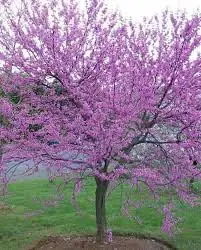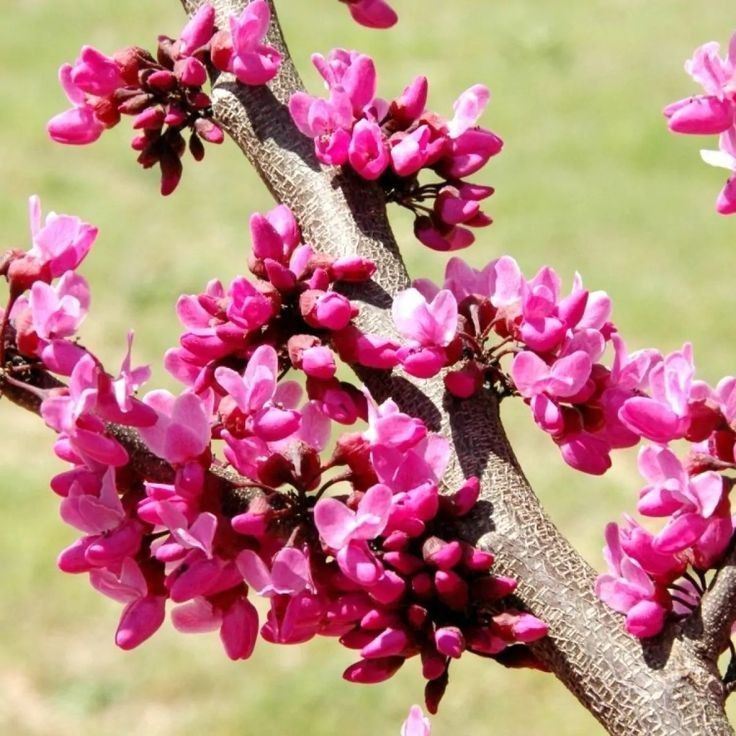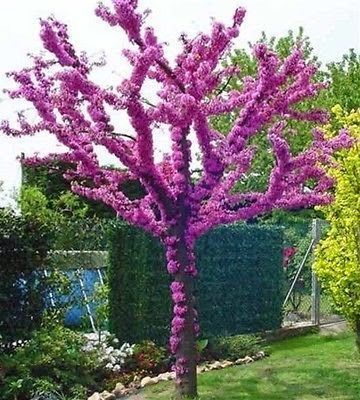Cercis (Judas Tree) and (Chinese Redbud)

The Judas tree, European redbud or love tree (Cercis siliquastrum) is one of the best ornamental trees you can grow. It has beautiful spring blossom – in late spring, the bare branches are smothered in pea-like magenta flowers, which are followed by pretty, heart-shaped leaves that turn butter yellow before falling in autumn. Purple seed pods appear in summer.
As it's slow growing and relatively compact, reaching around 3 to 4 yards in 20 years, the Judas tree is one of the best trees for small gardens. It's often multi-stemmed, which means it has an architectural appearance even when the branches are bare in winter.
There are a few theories surrounding the tree's English name. One suggests it was the tree that Judas Iscariot hanged himself from after betraying Jesus. However as the tree grows widely in Israel and Palestine, it could be a corruption of the word 'Judea'.
Stock
We have a good stock with different sizes.

Cercis chinenses (Chinese Redbud)
How to Grow and Care for Chinese redbud
Chinese redbud, also known as Eastern redbud, Yunnan redbud, Szechuan redbud
Chinese redbud thrives best in well-draining soil, positioned under full sun to partial shade, ensuring its striking blooms are showcased. Watering should be consistent, but caution is required to prevent waterlogged conditions. Soil moisture is key, but overwatering can lead to root rot, so allowing the soil to dry slightly between waterings is vital for chinese redbud's health. Pruning is minimal, making it suitable for gardeners seeking low-maintenance but visually impressive plants.
Chinese redbud thrives in the moderate humidity of its native woodland settings, showing a preference for consistent moisture without being waterlogged. This species is moderately drought-tolerant once established, but it benefits from deep watering once every two weeks to maintain its health and vigor. Outdoors, chinese redbud typically enters a period of dormancy during colder months; this natural cycle reduces the plant's water requirements, aligning with seasonal rainfall patterns and cooler temperatures that diminish evapotranspiration.
Redbuds add wonderful wildlife value to the garden as well. Bees and other pollinators love their early blooms. And once the redbud's whimsical green pods emerge in late summer, songbirds and small mammals feast on the seeds within.
While the charming heart-shaped leaves are typically green, different cultivars offer lime green, yellow, bronze, or burgundy leaves.
Redbud trees have a quick growth rate, but stay small. Their mature size is usually 20 to 30 feet (6 to 9 m) tall with a 15 to 35 feet (4.5 to 6 m) spread. Gardeners commonly grow redbud trees in naturalized or woodland areas. Redbuds also work well in a shrub border or as a specimen tree. Due to their small size, considerable beauty, and wildlife value, eastern redbuds are a prime choice for gardeners with varying landscaping needs.


